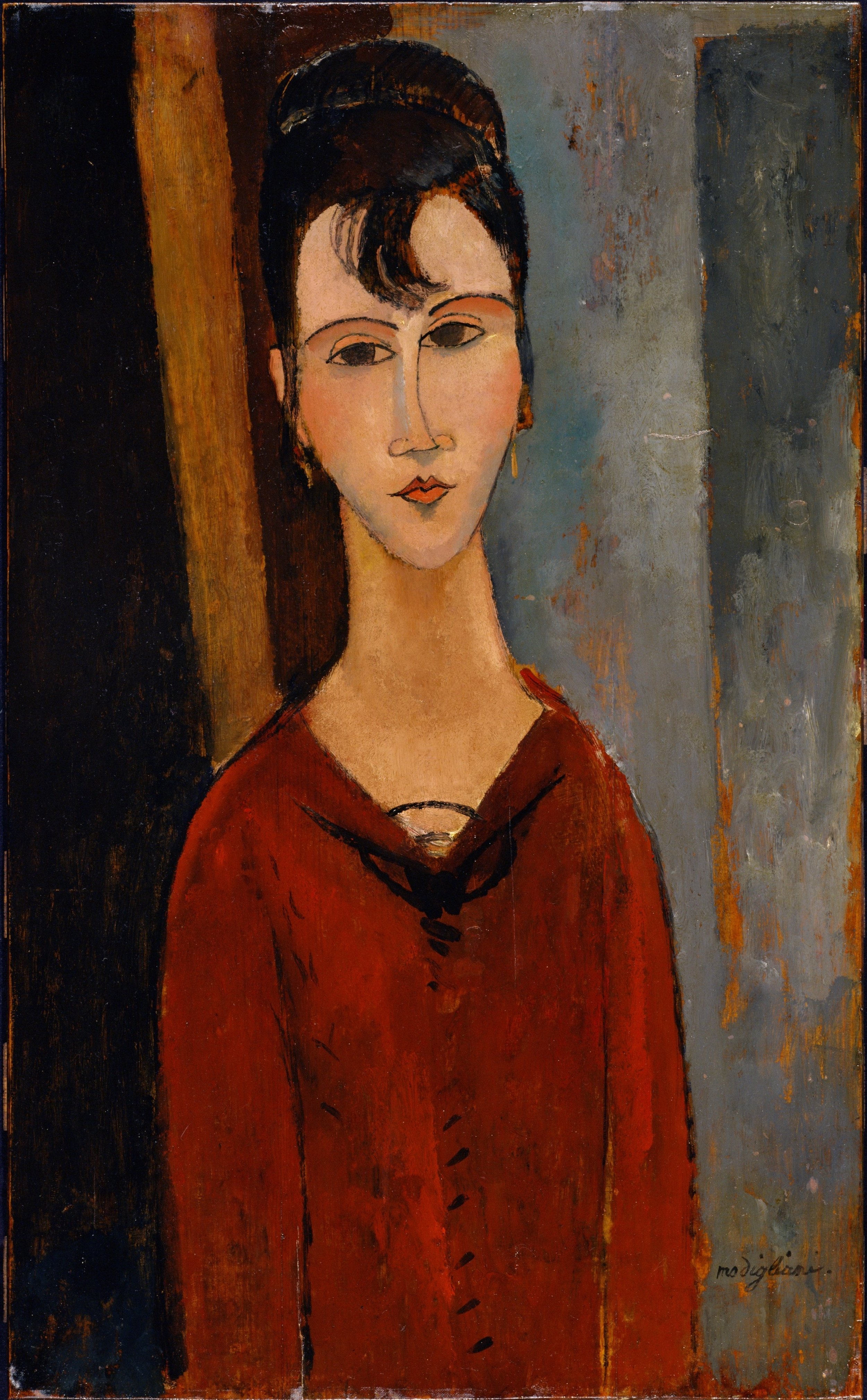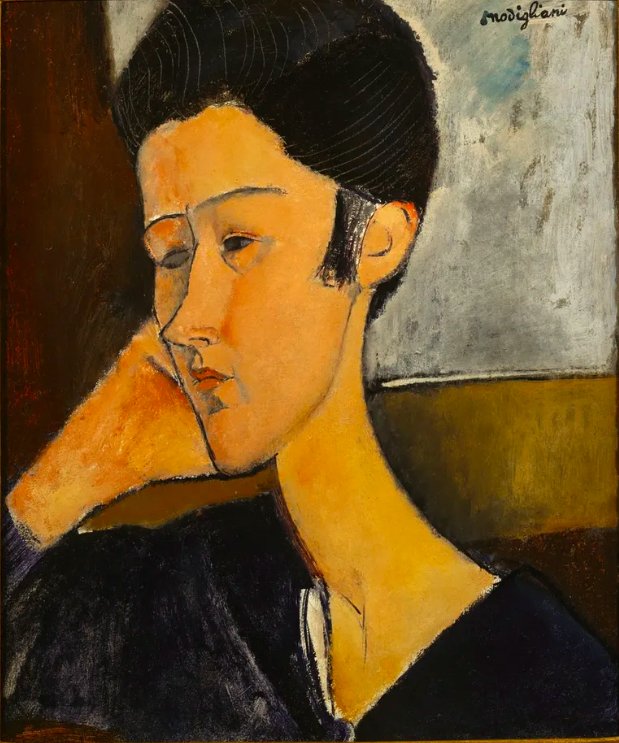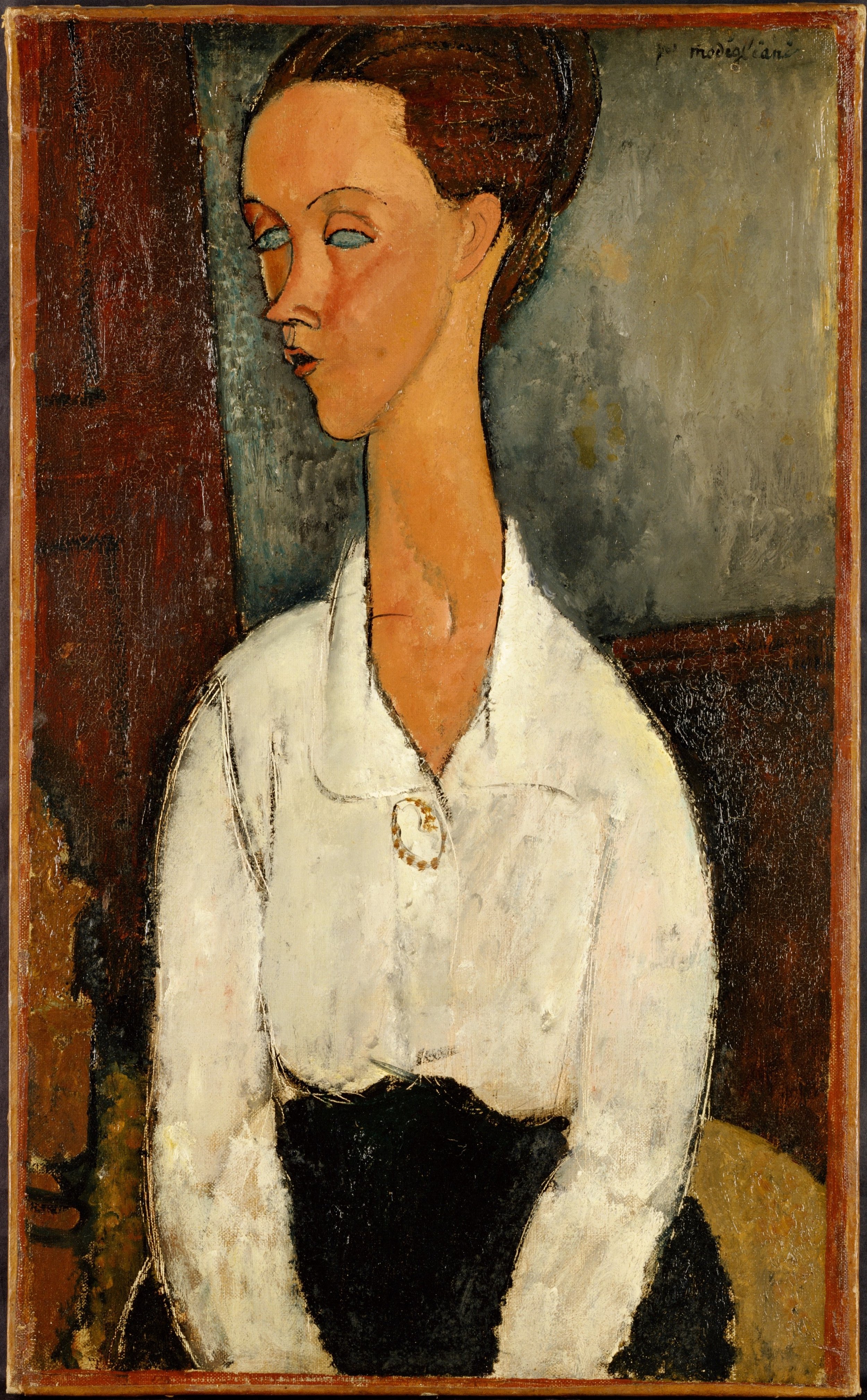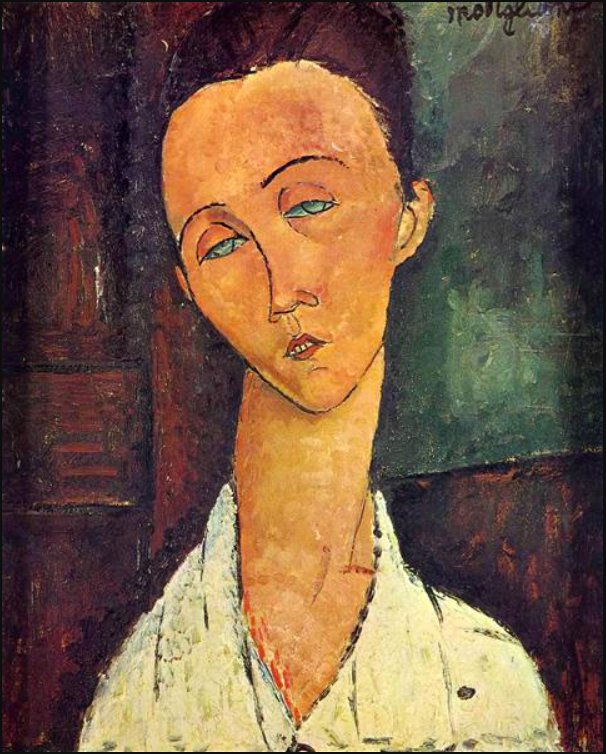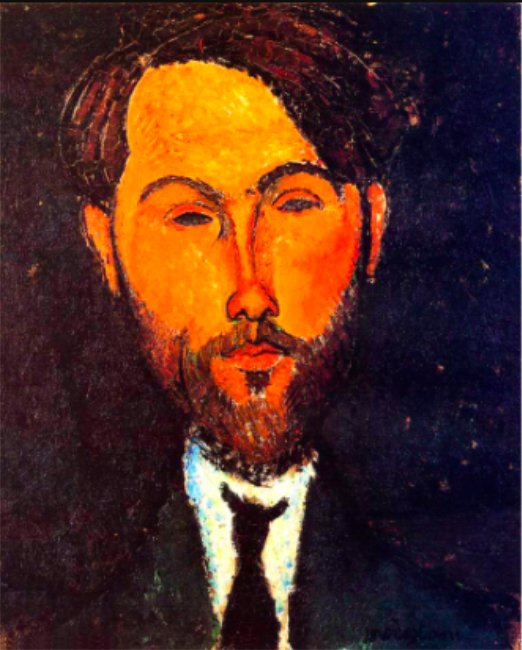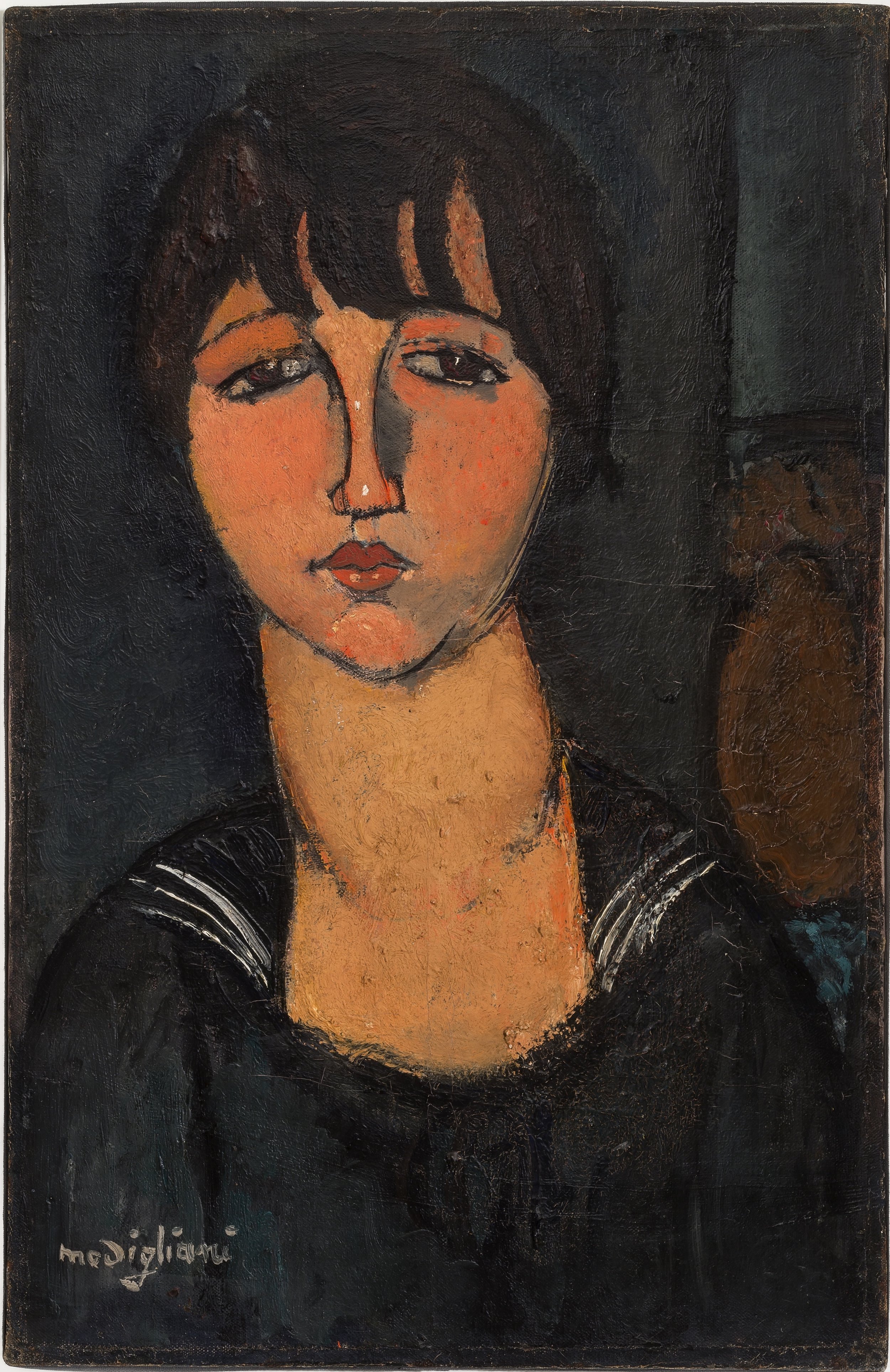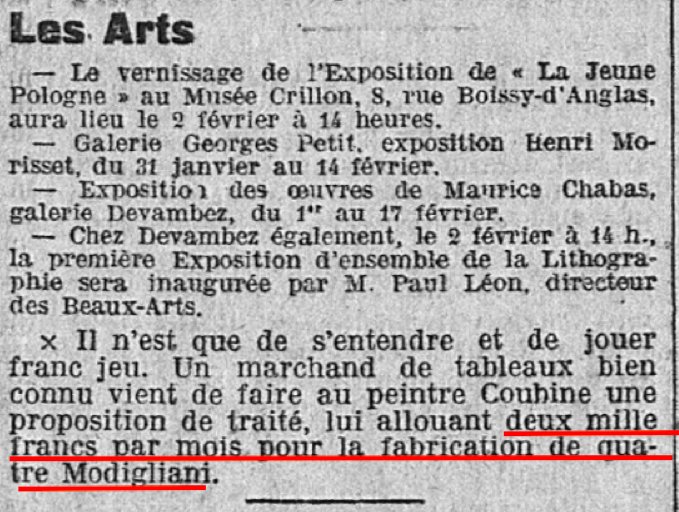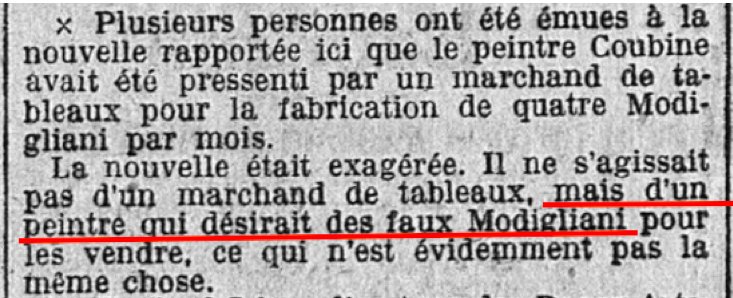Game Changer
Amedeo Modigliani (1884–1920)
Woman in a Sailor Shirt (La femme en blouse marine), 1916
Oil on canvas, 55 x 35 cm.
Solomon R. Guggenheim Foundation, New York. Bequest of Luisa Toso, 2016 (2016.45)
March 18, 2024
How Galerie Bernheim-Jeune Initiated the Modigliani Craze
Galerie Bernheim-Jeune, one of the leading art galleries in Paris, first entered the Modigliani market in September 1920. The gallery acquired seven paintings from the Norwegian art dealer Walther Halvorsen (1887–1972) just months after the artist’s death (fig. 1).[1] By year’s end, the gallery had purchased five more paintings from a range of sources, including one of Amedeo Modigliani’s earliest collectors, as well as one of his good friends.[2] Perhaps most surprisingly, Paul Guillaume (1891–1934), one of the first dealers to support the artist, sold a painting to Bernheim-Jeune in December 1920.[3]
Paintings acquired from Halvorsen
in September 1920
fig. 1
Left to right. top to bottom, Row 1: Portrait of a Woman (Mme C.D.), c. 1916. Pola Museum of Art, Kanagawa, Japan. Photo: Pola Museum of Art / DNPartcom; Anna Zborowska, 1916. Private collection; Portrait of Lunia Czechowska, 1917. Pola Museum of Art, Kanagawa. Photo: Pola Museum of Art / DNPartcom; Row 2: Lunia Czechowska, 1917. Private collection; Léopold Zborowski, 1917. Private collection; Léopold Zborowski, 1917. Present whereabouts unknown; Row 3: Woman in a Sailor Shirt, 1916. Solomon R. Guggenheim Foundation, New York.
The Parisian art world took note when Bernheim-Jeune,
a leading gallery, suddenly entered the Modigliani market
in September 1920.
Established in 1863 by Alexandre Bernheim, Galerie Bernheim-Jeune was run by his sons, Josse (1870–1941) and Gaston Bernheim-Jeune (1870–1953). Since 1906, the gallery’s contemporary art program had been under the direction of the well-known art critic Félix Fénéon (1861–1944) (fig. 2).[4] Thanks to Fénéon’s efforts, Bernheim-Jeune became world-renowned for establishing the reputations of Paul Cezanne, Henri Matisse, Georges Seurat, Paul Signac, and Pierre Bonnard, and notably presented the first exhibition of the Futurists in 1912.
Félix Fénéon
fig. 2:
Photograph by Eugène Pirou, 1886.
After Modigliani’s death in January 1920 and the suicide of his companion Jeanne Hébuterne immediately afterward, Léopold Zborowski (1889–1932), the poet-turned-art-dealer, assumed responsibility for managing the artist’s estate. For the last few years of Modigliani’s life, Zborowski had paid him a regular stipend, supplied him with materials and models, and supported him in any way that he could. It was understood that the artwork that remained in his studio at the time of Modigliani’s death belonged to Zborowski. If the dealer made an inventory of the collection of artwork, however, this record has not been found. In fact, little documentation of Zborowski’s business dealings is known to exist.
What we do know is that because he did not have a gallery of his own (Galerie Zborowski would not open until 1926), he organized exhibitions at other galleries in Paris. In the summer of 1920, the group show at Galerie Manzi-Joyant included fifteen of his Modigliani paintings and that December, the solo show he arranged at Galerie Montaigne featured thirty-three paintings.[5] Earlier in the year, a group exhibition with an emphasis on Modigliani opened on January 27th, the day of the artist’s funeral. Held at Galerie Devambez, this show was organized by Paul Guillaume and included thirteen Modiglianis from his own inventory.[6] Interesting to note is the fact that in 1921 neither Zborowski nor Guillaume organized an exhibition that included Modigliani’s work. This might suggest that their shows of the prior year had resulted in few sales.
Nevertheless, in 1921 Fénéon continued acquiring Modiglianis, adding fifteen to Bernheim-Jeune’s inventory. The majority of these paintings came from art dealers and the greatest number—almost half—came from Guillaume. Despite his burgeoning stock, Fénéon sold only two paintings in 1920 and three in 1921. Do these limited sales indicate that he was already planning a major exhibition for which he needed to amass artwork or do they reflect a lackluster market for the artist?
Was the Galerie Bernheim-Jeune Modigliani exhibition of 1922
an antidote to a lackluster market?
On February 7, 1922, Galerie Bernheim-Jeune presented Modigliani, a grand exhibition comprised of thirty-nine paintings, the largest showing of the artist’s work to date.[7] Unlike the Galerie B. Weill show of December 1917, the only solo Modigliani exhibition to have taken place during the artist’s lifetime, Bernheim-Jeune’s display generated an abundance of press attention and acclaim for the late artist. Fénéon then sent a selection of Modiglianis to the Venice Biennale where a dozen paintings were installed in a room dedicated to the artist.[8] The exhibition remained on view for six months—from April 15 to October 31, 1922—and attracted an international audience. The cachet of the venerable exhibition served as an official endorsement of Modigliani’s work and that year the Chicago collectors Helen Birch Bartlett and Frederic Clay Bartlett bought a painting in Paris.[9] In 1923, Dr. Albert C. Barnes, of Merion, Pennsylvania, acquired at least eleven canvases, fueling a Modigliani frenzy in the Paris art market.[10]
It seems that the seed for this craze was planted when it first became known that Félix Fénéon was actively acquiring Modiglianis. On January 31, 1922, just days before the Galerie Bernheim-Jeune show opened, L’Intransigeant ran a short story about an unnamed art dealer rumored to be offering two thousand francs for an artist to produce four Modigliani paintings per month (fig. 3). A week later, on February 8th, the day after the show’s opening, the newspaper printed a correction; in fact, it was a painter, not a dealer, who was looking for fake Modiglianis to sell (fig. 4). Either way, the outcome would be the same and today the Modigliani market is mired in complication because of the countless forged paintings that became available so soon after the artist’s untimely death.
fig. 3 (left):
“ […] two thousand francs per month for the fabrication of four Modigliani[s].” L’Intransigeant (January 31, 1922): 2.
fig. 4 (right):
“[…] not an art dealer but a painter who wanted fake Modigliani[s] to sell.” L’Intransigeant (February 8, 1922): 2.
Julia May Boddewyn
The Modigliani Initiative would like to thank the Solomon R. Guggenheim Foundation and the Pola Museum of Art for providing us with the images of the works published in this essay.
Endnotes
Guy-Patrice and Floriane Dauberville, Modigliani: Amedeo Modigliani Chez Bernheim-Jeune (Paris: Éditions Bernheim-Jeune, 2015), nos. 1–5, pp. 40–9 and nos. 55–6, pp. 146–9.
Elie-Joseph Bois and Oscar Miestchaninoff. Dauberville (2015), nos. 6–7, pp. 50–3 and no. 57, pp. 150–1, respectively.
Femme en robe noir, c. 1917. Musée d’Art et d’Histoire, Geneva (1988-0035). Dauberville (2015), no. 9, pp. 56–7.
Sean O’Hanlan, "Félix Fénéon," The Modern Art Index Project (August 2021), Leonard A. Lauder Research Center for Modern Art, The Metropolitan Museum of Art. Link
La Jeune Peinture Française (June 17–July 4, 1920); Exposition rétrospective des oeuvres de Modigliani (December 11–29, 1920).
Exposition de Peinture Moderne (January 27–February 12, 1920).
The show ran from February 7 to 21, 1922.
XIII Exposizione Internazionale d'Arte: Mostra Individuale di Amedeo Modigliani.
Jacques and Berthe Lipchitz, 1916. Art Institute of Chicago, Helen Birch Bartlett Memorial Collection (1926.221). Link
Today, the Barnes Foundation collection includes a dozen canvases by the artist. Rivaled only by the Chester Dale collection at the National Gallery of Art, Washington, DC, these are the two largest Modigliani paintings collections in the world.



